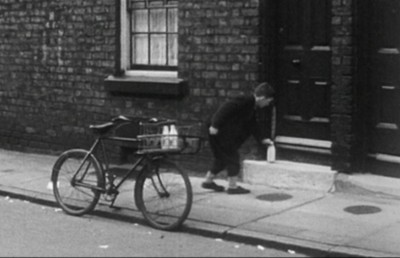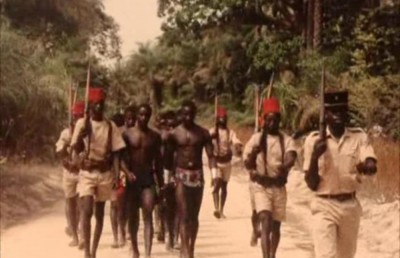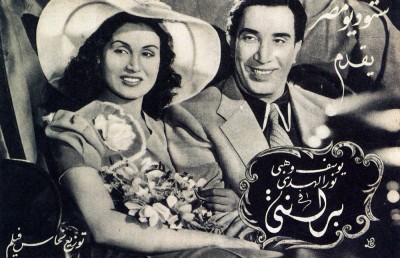Vampire’s Ecstasy
The Devil’s Plaything
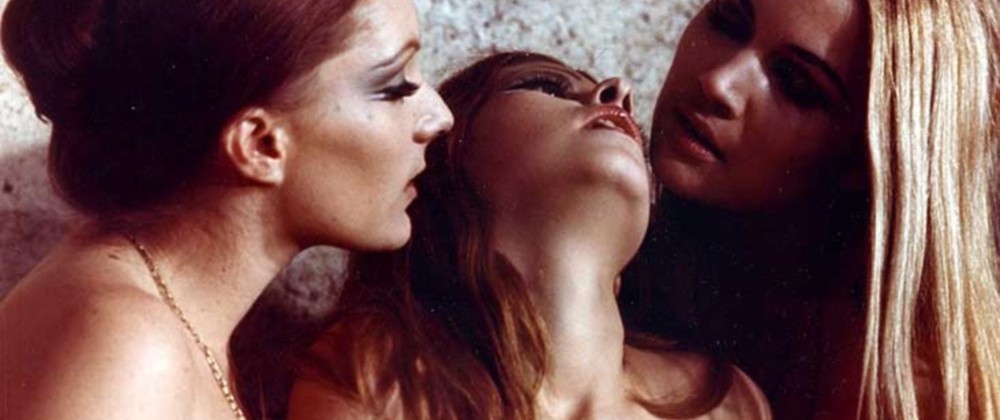
Vampire’s Ecstasy (1973, aka The Devil’s Plaything, The Veil of Blood, Curse of the Black Sisters) raises that critical temptation of trying to reclaim a film from its obvious first intention to a counter-reading, or an ‘against the grain’ reading. In this case, suggest that a film clearly intended for a male audience, made by a male filmmaker with the goal of titillating a straight male audience, can be read as having a feminist lining. On the one hand, while this was never intended as an outright feminist film, it features many lesbian vampires, a few who are either weak or silenced, and would no doubt be a candidate for a retro billing at a hip lesbian/gay film festival. Hence from a certain standpoint, this is a unique horror film by the prolific filmmaker Joseph W. Sarno, known mainly for his soft-core and hardcore erotica and sexploitation fare (Inga, 1968, The Young, Erotic Fanny Hill, 1971, Confessions of a Young American Housewife, 1974, Butterflies, 1975, Misty, 1976). Unique because the film presents a world where men are ostensibly cast aside for the wanton desires of an (practically) all-female vampire sex cult that worships an infamous 17th century Countess Bathory-like German aristocrat named Danielle Vaga (only represented through a portrait painting, though her ‘spirit’ is ever present).
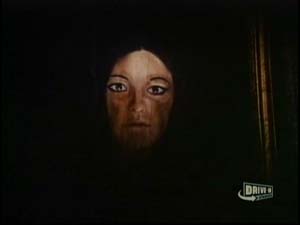
The film opens with a long shot of a castle at night, and cuts to an extended pre-credit dungeon scene of a bevy of nearly nude women dancing sensually to a tribal drum beat. The dancers are led by an intense, dark-haired woman named Wanda (played by Hungarian actress Nadia Henkowa), the leader of the cult. Wanda begins to fondle the dancing women aggressively, but they all seem to enjoy her touch. One woman from the group is selected, laid on a table, sexually pleasured by the other women, and encouraged to masturbate with a large black phallic shaped sculpture. This begins a motif of unending phallic objects that the vampire women please themselves with, or use to please captive women, who are either under a spell induced by the cult and/or in a state of sexual euphoria. The objects include the black sculpture, a variety of different shaped, sized candles, including some hilarious penis-shaped candles.
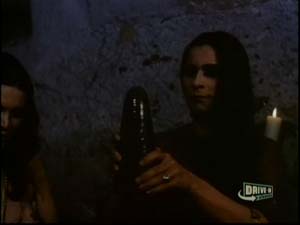
From a structural standpoint, to begin a film with a six minute scene without any dialogue, featuring a group of nude woman dancing to a repetitive percussive beat and having lesbian sex is quite a brazen gesture (at least I can’t think of another similar opening!).
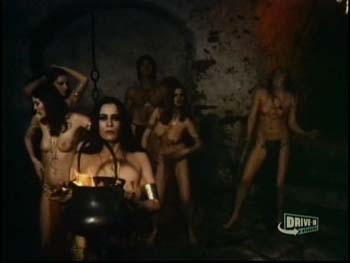
Like about two dozen other Euro horror films (Sarno is American, but this is shot in Germany and is a West German/Swedish co-production), this one starts off with a group of people arriving at a remote castle, in this case they arrive in two separate groups; the first to arrive by train and then coach are three related women (two sisters, one cousin), the dark-haired Monica (Ulrike Butz) and her fair-haired sister Helga, played by Swedish sex starlet Marie Forså, and their cousin, a tall blonde woman who has very little to do in the plot.
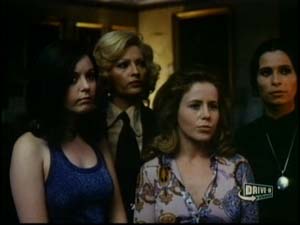
A few scenes later a second group arrive at the castle after their car has broken down, a brother and sister with heavy incestuous tendencies, Peter (Nico Wolf) and Dr. Julia Malenkow (Anke Syring). Wanda announces herself to her guests as the castle’s ‘housekeeper,’ and, symbolically, sports a repressive upturned bun hairstyle when in housekeeper mode, but lets her hair down while leading her vampire dance troupe.
Monica has come to the castle for the reading of her late aunt’s will which, dated 1969, states that Monica will be the heir of the castle after she has lived in it for one year. Narratively, this gives Wanda ample time to ply her seduction and unravel her plot to revive the spirit of the Baroness in the body of Monica, who bears a striking resemblance to the portrait of Danielle Vaga hanging on the castle wall, a fact which Monica herself notices and which seems to empower her. It can be assumed that Monica has been lured to the castle perhaps by a long distance spell cast by Wanda, to become the spiritual heir of the vampiric Baroness Danielle Vaga. However, the reason for Dr. Julia’s visit to the area is uncertain, and a possible cause of concern for Wanda; when Wanda asks Julia why she has come to the area, Julia responds, “I’ve come to study the superstitious beliefs of the villagers,” to which Wanda campily responds with a raised sturdy eyebrow.
From this point on the film alternates between mysterious references to the exploits of the 17th century Baroness, who was staked to death as a vampire by overzealous villagers, and attempts by the lesbian vampire coven to seduce their houseguests by tribal dances and German incantations which act as aphrodisiacs on their houseguests. The closer they get to the fulfillment of their plan, the more emphatic they become, whispering camp lines in heavy East European accents, such as “The hour of the wampire draws near.” This stately dialogue, delivered with the particular accents, gives the film a certain campiness factor, but at the same time, the nature of the line delivery adds an almost Brechtian estrangement to the proceedings.
The precise narrative function and powers of Wanda is unclear, but it appears she has the powers of a medium and is capable of transmitting the spirit of the Baroness into the bodies of other people. She also has, through the ritualistic dancing and incantations, the power to control people’s minds to get them to do things for her, most prominently, trying to control Helga to get her to remove the garlic cross placed by Dr. Julia around Peter’s neck. The main structuring device that Sarno employs is a rather heavy-handed but sometimes surprisingly effective cross-cutting pattern, continually intercutting between the dancing/chanting and the various inhabitants in a reciprocating state of sexual agitation, which is relieved by coupling or (most often) masturbation. In fact, the act of masturbation seems the preferred method of achieving pleasure, as almost every important character, except Wanda, is seen in an act of self-pleasure. They gladly service their sexual urges, and in the process writhe in sexual ecstasy, while the actual vampirizing of the victims comes almost as an afterthought (or perhaps, the ‘climax’).
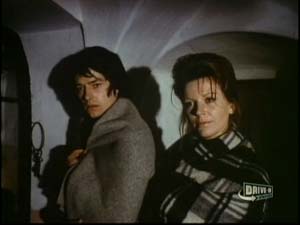
Dr. Julia, who serves the requisite function as the Van Helsing character, is perhaps the key figure in any attempt to read a pseudo-feminist tract into the film. For starters, having a female Van Helsing figure is progressive on its own (and not, as might have been, her brother Peter functioning in that role). She also ‘moves’ the narrative more than any other character. She is the person who senses the ‘evil’ in the castle, and is knowledgeable about vampire folklore. For example, she protects herself and Peter by supplying a garlic cross necklace and in another scene saves herself from a vampire attack with a cross. While the aphrodisiac dancing and chanting causes most of the women to masturbate or have sex with another man or woman (usually the case), it kindles Julia’s incestuous feelings for Peter, which makes her a ‘flawed’ heroine, to say the least. Her interactions with Wanda, the equivalent to the Dracula-Van Helsing exchanges, provide some of the film’s more intriguing tensions, such as the way Julia continually refers to Wanda as “Frauline,” a German title (the word means little woman) normally reserved for unmarried women or children which, in reference to the lesbian Wanda, comes across as demeaning and condescending (the tone of her voice underscores this). Although she struggles with her incestuous feelings and is often uncertain of herself, she eventually fulfills her role of vampire slayer in the curt climax, where she turns the stake on Monica, who self-impales herself, at which point Julia pronounces, under full daylight, “At last they [Wanda and her vampire entourage], are free and the Baroness, at long last, she’s at rest.” The once confident and aggressive Wanda and her minions become demure, pat their foreheads and hair as if getting ready for a visit from the town doctor, and quietly, gently, slip away into the background woods.
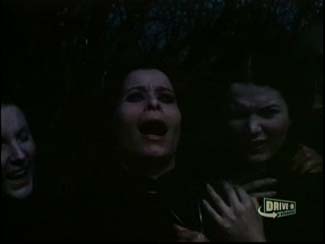
At the exact moment when Monica is staked in the breast, Sarno cuts to Wanda and the other vampires clutching at their breasts as if they too were being staked, suggesting either a telepathic link between the spirit of the Baroness and them, or, in a more interesting counter-reading, that the whole idea of them being vampires and the Baroness a supernatural presence is entirely psychological/psychosomatic rather than real. This ‘non-supernatural’ reading is corroborated by Sarno’s wife in one of the view in-print interviews with Sarno, in this case being interviewed alongside his wife Peggy, who had this to say about Vampire Ecstasy: “The housekeeper believes she is waiting for the return of a young woman who is a vampire that has died….One of the young women who comes in becomes involved psychologically in being this vampire –almost through self-hypnosis she believes she is this vampire, and everyone else believes it…So she goes through the entire “thing” and finally in the end she has to be killed because now she is the vampire. In the denouement when she’s about to inflict herself on the other young woman who is her friend and partner [Peggy is misremembering the details of the plot here, since the character, Monica, is about the attack Dr. Julia, not her ‘friend’ Helga, who is her cousin anyway], she is killed by a wooden stake that goes through her heart quite by accident. This film more or less is about persuasion….” 1
The figure of the vampire (and the act of vampirism) is without question the monster most strongly associated with sexuality, either literally or metaphorically (the puncturing of the flesh, the ‘oozing’ of body fluids, the victim’s ecstatic response to the blood sucking, etc.). The appropriately titled Vampire Ecstasy is undoubtedly the vampire film which plays out this fact more than any other vampire film (except obvious hardcore vampire parodies). There is very little actual neck biting or bloodletting in Vampire Ecstasy, but instead the vampire’s power is channeled through the ability to control one’s mind through sexual arousal. In one scene the tribal dancing puts poor Helga, who is masturbating in her bed, in such a horny state that she pleads with Wanda to “make it stop.” The film also plays up, to the point of exclusivity, the ‘deviant’ (i.e. non-heterosexual) aspects of vampire sexuality by playing to every possible lesbian stereotype (Wanda as the stern, butch housekeeper, Wanda as the 1960s hippie-style free sex swinger when in her dancing mode, the vixen, the quiet, sensitive type, etc.). The only straight man on woman sex is between Helga and Peter and, briefly, an intimate moment between brother/sister Julia and Peter. There is also the scene (after Monica has become ‘possessed’ by Vaga’s spirit) where Monica makes love with Peter, but it is clearly as a relief to her lesbian sexual arousal over Helga being masturbated offscreen by Wanda and the other lesbians. Otherwise all the sexuality (not counting the copious masturbating) among the vampires is lesbian, which can be seen as either a progressive gesture, or simply a marketing strategy to a straight male audience (two nude women for the price of one).
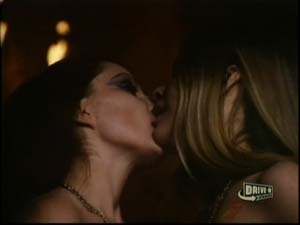
Regardless of the ideology of the sex, what is progressive, from the standpoint of the patriarchal hegemony of narrative cinema (at least Laura Mulvey’s ‘visual pleasures and narrative cinema’) is that it is the women who have the strength of character and strength of narrative action. Wanda is the central pillar of strength among the ‘evil’ vampires, and Julia the leader on the side of ‘goodness.’ There is only one male character of any consequence, Peter, and he is a weak character who is either under the thumb of his sister Julia or Helga, or a plaything for the sexually enraged Monica. As if to underscore the narrative impotence of any male, Sarno includes a muscular man (apparently a former Mr. Germany muscle man) among the dancing women, who is usually seen in the background of the scenes, but never utters a word or does anything other than dance. In the scene where Monica is initiated into the coven and ‘transformed’ into Danielle Vaga, she is sexually aroused by a petting session with Wanda, then points to Helga standing in a comatose state offscreen and says, in a hushed, passionate voice, “I want her….”
A few scenes later, in one of the best moments in the film, urged on by Wanda, Monica’s desire is channeled over to Dr. Julia. In the shot, filmed with a red filter, we see the possessed Monica, breathing heavily and stroking a large candle in the foreground, her face in a contorted expression of sadism, sexual desire, and carnality, incanting, “I must have her, I must have her blood.” The shot is intercut with shots of Julia and her brother Peter in their bedroom, with Peter preying on Julia’s incestuous desire for him to convince her to remove the garlic cross from his neck, and renounce her belief in “such ridiculous nonsense.”
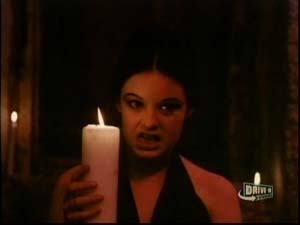
Despite the low budget and heavy-handed editing, Sarno makes good use of the on-location photography and manages to achieve an undercurrent of poetic melancholia and surrealism with the post-dubbed sound, the repetitive minimalist musical refrains and the often hard to understand German/Swedish/Hungarian accents of the major players (according to the film’s producer, Chris B. Nebe, Vampire Ecstasy was the first film to be shot in English in Germany). 2 There is much evidence through the choreographed two and three shot close-ups of women, the female hairstyles (especially Wanda’s bun-style which echoes Ingrid Thulin’s character from Cries and Whsipers Karin’s hairstyle) and their restrictive black dresses, that Sarno was well aware of Ingmar Bergman’s angst-ridden dramas, especially Cries and Whispers, made in 1972, the year before Vampire Ecstasy, from which Sarno lifts the use of all-red filtered shots.
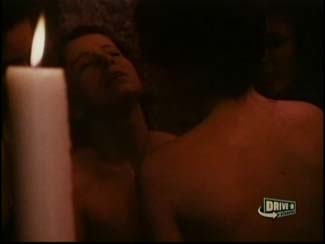
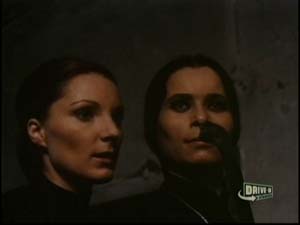
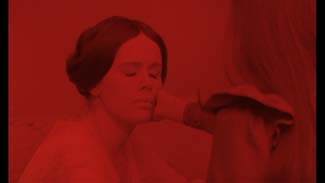
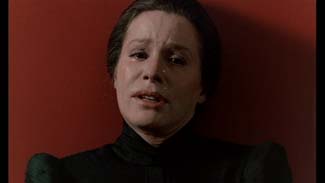
The film recalls, thematically, the Hammer Karnstein trilogy, but visually and in terms of sexual explicitness, has more in common with the surreal palette of the vampire films of Jean Rollin and Jesus Franco.
The film has an odd and unsatisfying history on DVD. Currently, your choice is between a heavily censored 87 minute version entitled The Devil’s Plaything which is properly framed at 1.78 anamorphic, or an uncensored version that runs 103 minutes but that is at an improper full frame aspect ratio. According to a review by Casey Scott that compares the two versions, there is only minimal information loss on the full frame version, hence, if forced to choose, I would buy the uncensored full frame version over the censored 1.78 version. For a good discussion of the different DVD versions, I recommend reading the Howarth review. This essay is based on a televised screening of the full frame uncensored version, which aired on the Drive-In Classics.
Addendum
Since this essay was written all the above DVD versions of Joe Sarno’s Vampire Ecstasy have been eclipsed in quality and authenticity by the 2016 Blu Ray release by Film Media and Film Movement. Vampire Ecstasy is coupled with Sarno’s 1963 black & white Sin You Sinners as part of their Joseph W. Sarno Retrospect Series. Vampire Ecstasy is a 2K restoration of the full length 103 minute version and, if you compare the frame grabs below to the ones above, the improvement in clarity, resolution and color is nothing short of amazing. Sin You Sinners is also impressive but is sourced by a lesser quality print with sporadic vertical scratches, but for Sarno’s earliest film on digital format, it is a marked improvement over the previous budget label Alpha Videos release, which was also full frame. The double Blu Ray comes with special features for the Vampire Ecstasy, a full commentary track with producer Chris Nebe and a few short interviews with Sarno. Capping off the impressive release are liner notes by the always reliable Tim Lucas.
Vampire Ecstasy
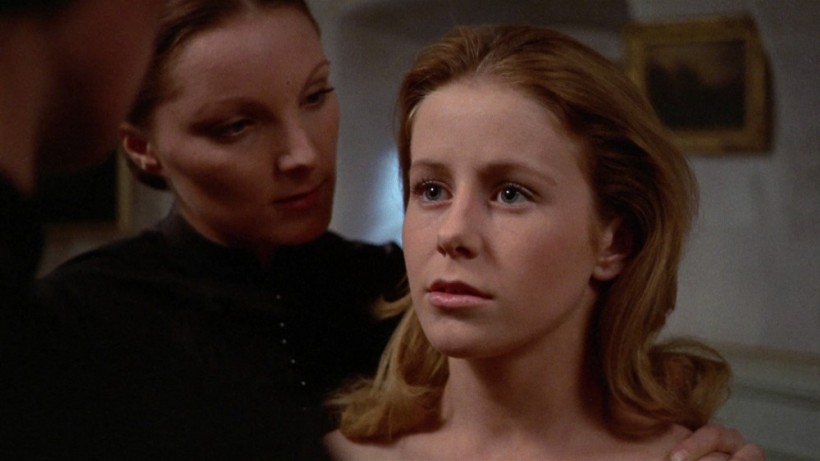
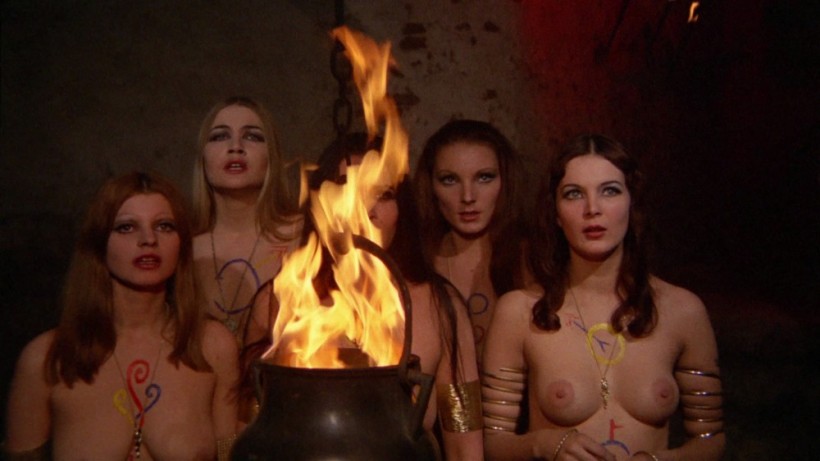
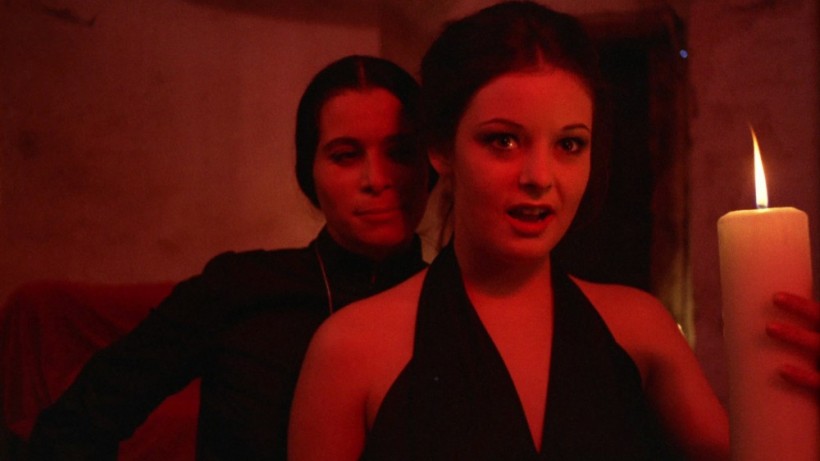
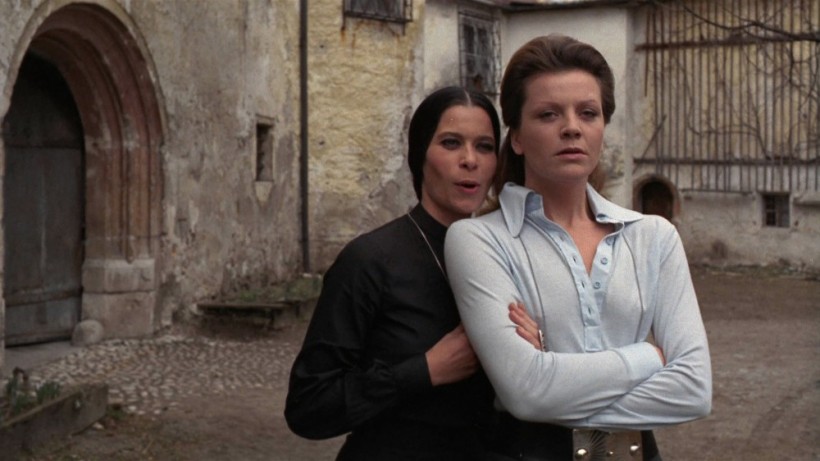
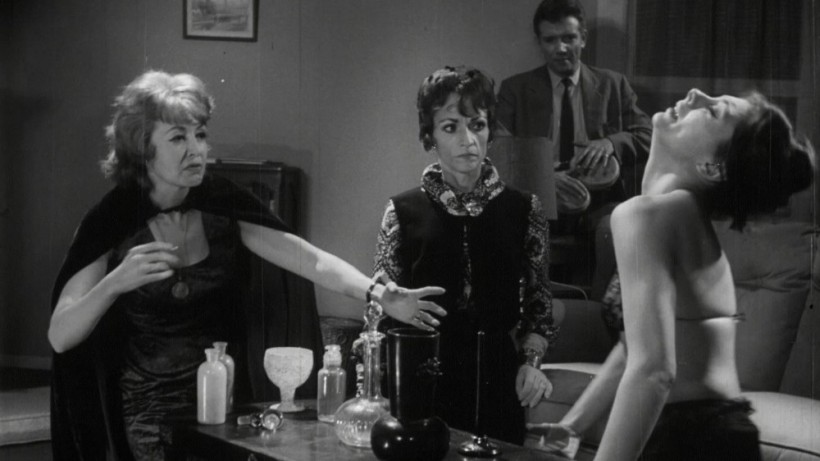
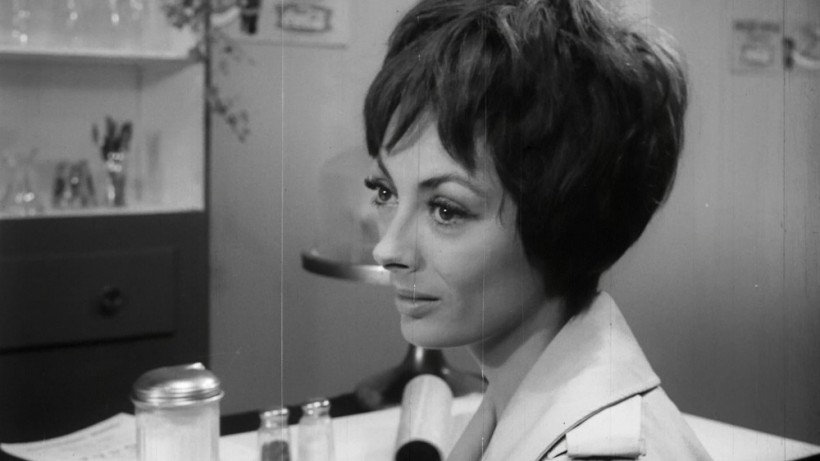
Notes
- V. Vale and Ana Barrado, “Interview: Joe Sarno,” The Incredibly Strange Films . San Francisco: Re/Search Publications, 1986, p. 97. ↩
- I have not yet seen the DVD, but according to Nathaniel Thompson Nebe mentions this fact on the commentary track of the DVD. Mondo Digital ↩




